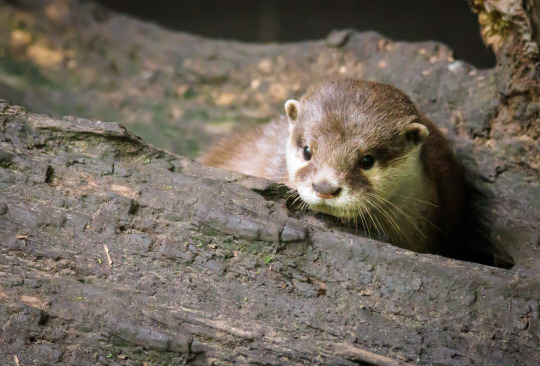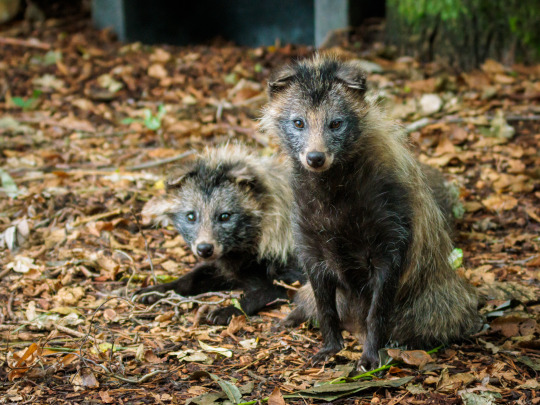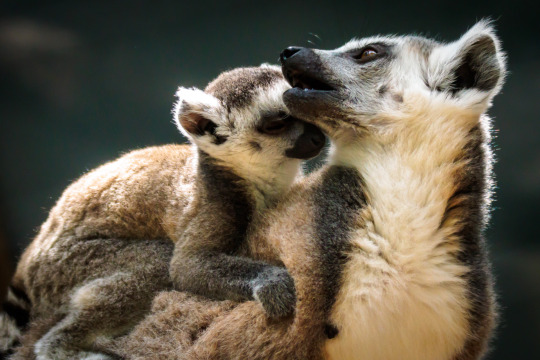#Aonyx cinereus
Text


a family of four asian small-clawed otters (Aonyx cinereus), the female with the lighter coat has a form of leucism
#they're my work otters lol#two of them were born last year i saw them as small small babies <3#mine#a#otters#asian small clawed otters#mammals#Aonyx cinereus
92 notes
·
View notes
Text



#poll#Class: Mammalia#Order: Carnivora#Family: Mustelidae#Genus: Aonyx#Aonyx Cinereus#Range: Indomalayan#Range: Palearctic
18 notes
·
View notes
Text





#Dierenrijk#Photography#Photo#Zoophotography#zoo#animal#animals#animalphotography#Asian#small-clawed#otter#Aonyx#cinereus#otters#banded#zebra#mongoose#Mungos#mungo#zebramongoose#bandedmongoose#Mongooses#Wolf#canis#lupus#Wolves#canine#canines#bush#dog
82 notes
·
View notes
Text
Just an-otter stressed mum

A one-picture tale of a stressed otter - with a couple of her cubs.
Following a bevy of these otters are noisy business. Not that other otters (…) are very silent, but these animals are chatting and communicating loudly even more all the time.
An then they live a life on high speed, in a combination of socializing and hunting/playing. No wonder one of the grown ups looked like this after a while.
Small and vulnerable
These otters are spread out in all of SE Asia and north to Central Asia, from Indonesia in south via Indochina north to the Himalayas. They are a vulnerable species, heavily sought after for their fur and as pets. And, of course, their habitats og rivers and wetlands are threatened by human building projects.
More on the Asian small-clawed otter (Aonyx cinereus).
#bangkokzoo#lostforever#2018#surprised#otter#Asian#smallclawed#Aonyx#cinereus#family#litter#kids#2018CE#bangkok#thailand#lastchancetosee#dusit#zoo#dusitzoo#animalphotography#citylife#citywalk#art#buddhism#bluesky#market
1 note
·
View note
Text
Phylogenetic weasel tournament
Family: Mustelidae
Subfamily: Lutrinae
Genus: Aonyx






They may look very similar, they the african clawless otter is one of the biggest members of the family, while the asian small-clawed otter is literally on the other end of the spectrum.

This illustration shows approximately their real relative sizes.
pictures: 1, 2, 3-4, 5, 6, 7
#polls#tournament poll#phylogenetic weasel tournament#lutrinae#african clawless otter#asian small-clawed otter#fun fact: hungarian wikipedia says asian small-clawed otter is in a different genus#but you know this isn't something that can be objectively correct or not#a genus is not part of a describable and definable reality; only the relative degree of kinship#it's arbritary where we draw a line: this is the same genus and this is not#(magyarul is hogy a nyelvet ismerők élvezhessék ezt a csodaszép mondatot:#a nem nem valóságos és önkényes hol húzzuk meg a határt: ez még ugyanaz a nem és ez már nem)
32 notes
·
View notes
Text

The smallest otter species is the Asian small-clawed otter (Aonyx cinereus), measuring in at 65-90 cm (25-35 inches) long, including tail. Unlike most other otters, their front feet are only partially webbed, which along with their short claws contributes to their extreme dexterity. They're known for being playful, charismatic, and social.
Small-clawed otters are considered vulnerable by the IUCN. In addition to threats like habitat loss, reduced food supply, and climate change, these otters are also increasingly impacted by the illegal pet trade.
164 notes
·
View notes
Text
Animal Anniversaries
The existing materialistic anniversary year theme/gift lists are silly and out of reach for most people. What if instead we themed the years around animal species that long term pair bond?
An incomplete list proposal is below. I'm celebrating my coyote year with my spouse, seems rad.
Prairie vole Microtus ochrogaster
3. New Holland Seahorse Hippocampus whitei
4. Oldfield mouse Peromyscus polionotus
5. Rock dove/pigeon Columba livia
6. Racoon dogs Nyctereutes procyonoides
7. French Angelfish Pomacanthus paru
8. Fennec Fox Vulpes zerda
9. Dik Dik Madoqua
10. Grey wolf Canis lupus
11. Coyote Canis latrans
12. Lovebird Agapornis
13. Gentoo penguin Pygoscelis papua
14. Titi Monkey Callicebinae
15. Barn owl Tyto alba
16. Asian small clawed otter Aonyx cinereus
17. Shingleback skink/bobtail lizard Tiliqua rugosa
19. Trumpeter Swans Cygnus buccinator
20. Common Raven corvus corax
22. Eurasian Beaver Castor fiber
23. Canadian Goose Branta canadensis
24. Black vulture Coragyps atratus
26. Atlantic puffin Fratercula arctica
28. Monk Parakeet Myiopsitta monachus
29. Harpy eagle Harpia harpyja
30. Gibbon Hylobatidae
35. Sandhill Crane Antigone canadensis
40. Scarlet Macaw Ara macao
50. California condor Gymnogyps californianus
60. Albatross Diomedeidae
#long term pair bond#anniversaries#biology#animals#fauna#yes i researched life spans and age of maturity and did the math to place them on the list#is this a shitpost or am i serious? who knows!#SpIn SpIn SpIn
8 notes
·
View notes
Text
Ripple in the Waters: Eurasian Otter Discovery in Western Ghats' Sanctuary
A thrilling discovery made by Mohan, S. K., and team in 2023 reveals something incredible! They spotted the elusive Eurasian Otter (Lutra lutra) right here in the Chinnar Wildlife Sanctuary within our beautiful Western Ghats. Two of these otters spotted in a rocky-torrential stream back in March 2020. These little fellas were on a frenzy, darting among submerged rocks, exploring nooks and crannies, and sometimes taking playful dives. What’s fascinating is their preference for spots where the water roars with energy, avoiding the calm and shallow areas.

Eurasian Otter Lutra lutra depositing spraints
Now, here’s the real scoop on where they were found – it's a paradise up there! At 1,275 meters altitude in the Chinnar Wildlife Sanctuary, there’s lush greenery, these halfway-between forests (called transitional sholas), and patches of green along a speedy stream with big rocks and fallen trees. And get this – this place isn’t just for our Eurasian Otter friends; it's also a sweet spot for the Asian Small-clawed Otter (Aonyx cinereus). Looks like they're sharing the space wisely!

Recorded site of Eurasian Otter Lutra lutra from Chinnar Wildlife Sanctuary
But here’s where it gets interesting: this discovery shakes up what we thought we knew about where these otters like to hang out in the Western Ghats. It's shouting out loud that we need to dive deeper into understanding these otters – their types, where they live, how many there are, and what they’re up to. Knowing all this stuff is like giving them a shield from the things that threaten them – losing their homes, sand mining, being hunted, and their numbers going down.
It’s clear as daylight that if we want to keep these otters safe and sound in our precious Western Ghats, we’ve got to take care of the greenery by the streams. It’s like giving them a big, leafy hug and saying, “We got you, little buddies!”
Source 👉 Mohan, S. K., Nath, L. R., Subin, K. S., Govindankutty, S. K., & Nameer, P. O. (2023). Recent record of Eurasian Otter Lutra lutra (Linnaeus, 1758)(Mammalia: Carnivora: Mustellidae) from Kerala part of the Western Ghats, India and an insight into the behaviour and habitat preferences. Journal of Threatened Taxa, 15(12), 24352-24356.
#animals#aonyxcinereus#asiansmallclawedotter#chinnarwildlifesanctuary#discovery#ecology#environment#environmentind#eurasianotter#forest#india#lutralutra#nature#news#otter#research#savewesternghats#smallclawedotter#travel#westernghats#wildlife
2 notes
·
View notes
Text
Chase is Asian
Is true: https://docs.google.com/document/d/1Td8oWYPSJzJNZ1Pawgfgdo1p756K-TrAnHC5tCsktig/edit
Work Text:
"My nutria!" Leo said, kissing Chase.
"Do you just call him 'otter' in Spanish?" Kudzu said, amused.
"Well, yeah, what else could I call him?"
"Maybe his actual species? There are tons of otters."
"Uh, I don't know what kind of otter he is."
Both turned to Chase.
"Me... neither."
***
"Hi Chase" his father called from the phone.
"Dad, do you know what kind of otters we are?
"Err, no? We've been on Echo since your great-great grandfather, though."
"Okay, thanks for nothing."
"You're welcome?"
Chase hang the phone.
***
"Okay, so here's the MyHeritage kit" Kudzu unpacked, "All you have to do is put your saliva on the-"
Chase spat on the swab.
"Okay, gross" Kudzu said.
***2 weeks later****
"It's here, it's finally here!" Chase said
"Thank Dios" Leo exhasperated.
In just a few seconds Chase tore the package open.
"It says I'm an Asian Small-Clawed Otter, Aonyx cinereus. O my God I'm Asian, just like you Kudzu"
Kudzu didn't respond.
"Oh, that explains so much about you!" Leo said, "Like why you like rice and Hatsune Miku!"
Kudzu didn't respond.
"I feel so vindicated, like there's a side of me I've got to explore."
"Please be mindful" Kudzu said, "you've been divorced from your Asian heritage by generations. Hell, I barely touch on mine."
Chase sat next to him, holding his paws on his.
"So maybe we could explore together?"
Kudzu sighed, then smiled.
"Yeah, I'd really like that."
0 notes
Text
lontra-anã-oriental (amblonyx cinereus), são encontradas em vários paises da Ásia, gostam de água doce.
lontra-africada-sem-garras (aonyx capensis), como o nome diz, não tem garras, e são destribuidas em vários paises africanos. aquáticas e raramente deixam a água, vivem mais em água salgada mas é indispensável a água doce. são uma das maiores em comprimento.
lontra-marinha (enhydra lutris), lontras que vivem em áreas rochosas que tem a presença de algas, mas as vezes pode não ter, podem ir até 50m mas nadam em profundidades menores, ficam em espaços marinhos próximos as costas.
lontra-de-pescoço-pintado (hydrictis maculicollis), ela fica na africa central, ali na africa subsaariana, espécie de água doce! ela é pequenininha, mede no maximo 1m.
lontra fluvial norte-americana (lontra canadensis), aquática de água doce ou salgada, suscetível a poluição, fica no ligar dependendo da qualidade da comida.
chugungo (lontra felina), ela habita exclusivamente o ambiente marinho, e é super ágil. "Desloca-se em uma faixa de até 30 m em terra sobre o nível do mar e de 100 a 150 m de profundidade no mar, principalmente em áreas rochosas de ventos fortes e algas abundantes."
lontra-neotropical (lontra longicaudis), ja falei sobre ela! é uma queridinha, eu a amo.
lontra-do-rio-sul (lontra provocax) nativa da argentina e chile.
lontra-euroasiática (lutra lutra), vivem na europa, asia e africa, o peixe faz parte de 80% de sua dieta, o resto é o que tme disponível no local que habita.
lontra-de-nariz-peludo (lutra sumatrana), nativa da Ásia.
lontra-de-pelo-liso (lutrogale perspicillata) sul da Ásia! se movem muito bem em água e em terra.
ariranha (pteronura brasiliensis), também ja falei dela, muito muito interessante!
0 notes
Photo

Asian small-clawed otter by jssvobodajs https://ift.tt/2R58Rmc
66 notes
·
View notes
Photo

ASIAN SMALL-CLAWED OTTER
Aonyx cinereus
©Laura Quick
The smallest of the 13 otter species, weighing less than 10 pounds (4.5 kilograms) and measuring up to two feet (61 centimeters) long—with 10 to 14 inches (25 to 35 centimeters) of that being tail.
Found in southern India, southern China, Southeast Asia, Indonesia and the Philippines. These otters live in small streams, rivers, marshes, rice paddies, seacoasts and in mangroves.
Asian small-clawed otters are a very vocal species and have a vocabulary of at least twelve different vocalizations.
Their coat of tightly packed under-fur and long guard hairs are water repellent. Air pockets within their coat keep them insulated and dry while under water, so it is very important that otters groom regularly and reintroduce air into their coats.
Their ears are small and, like their nostrils, can be closed while the animal swims under water.
Other posts you might like:
Giant Otter
North American River Otter
Baikal Seal
#asian small clawed otter#small clawed otter#Aonyx cinereus#©laura quick#southern asia#china#indonesia#philippines#vocal#vocabulary#water repellent fur#mammal#animal#photographers on tumblr#original photography on tumblr#santa barbara zoo
13 notes
·
View notes
Text





#BestZoo#Photography#Photo#Zoophotography#canon#eos#zoo#animal#animals#animalphotography#ringtailedlemur#lemur#catta#lemurs#Asian#small-clawed#otter#Aonyx#cinereus#otters
61 notes
·
View notes
Link
Angry Otter by AzureHowlShilach
Mustelid Monday
10 notes
·
View notes
